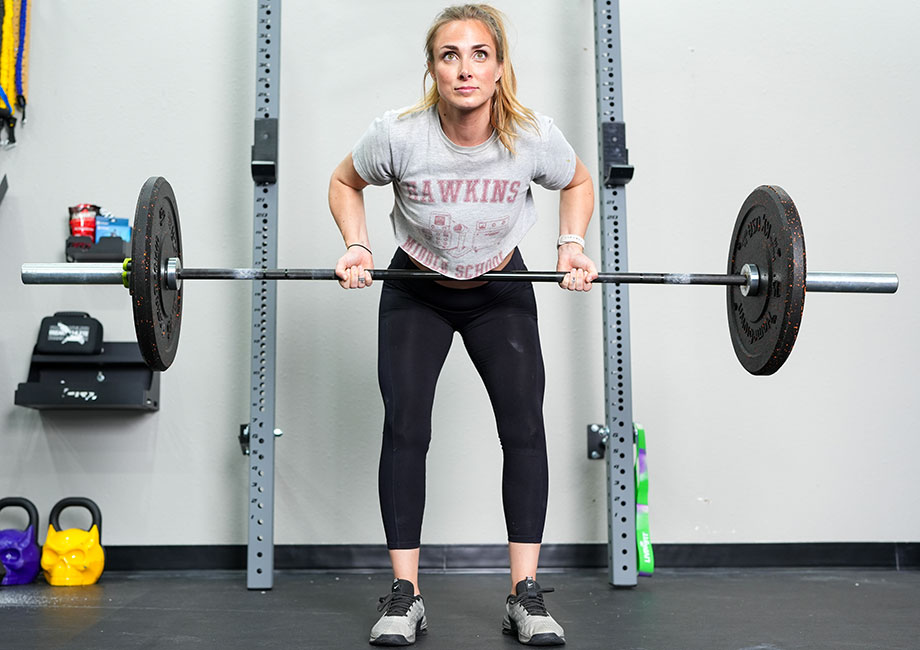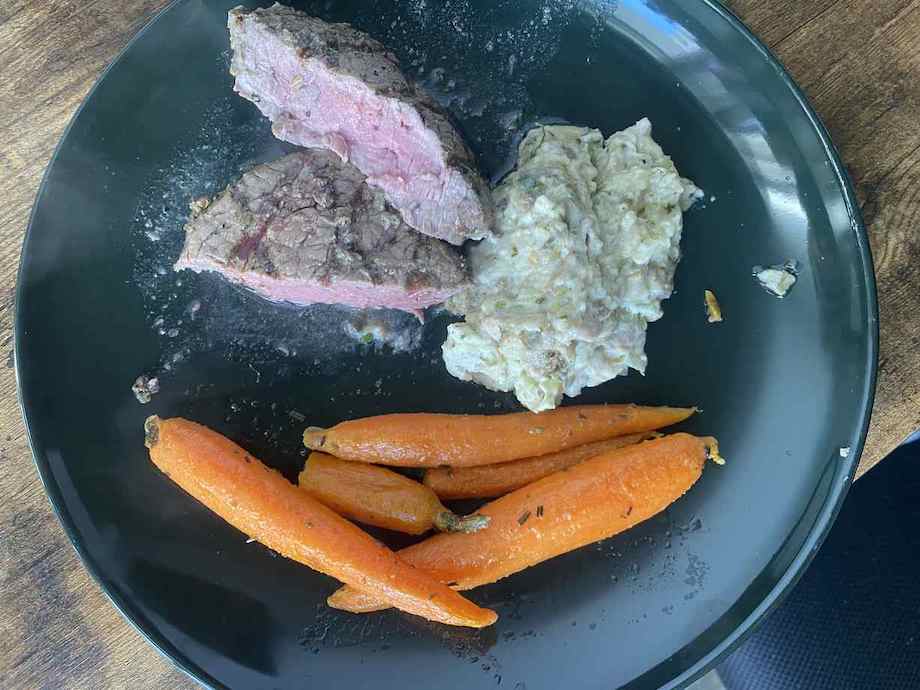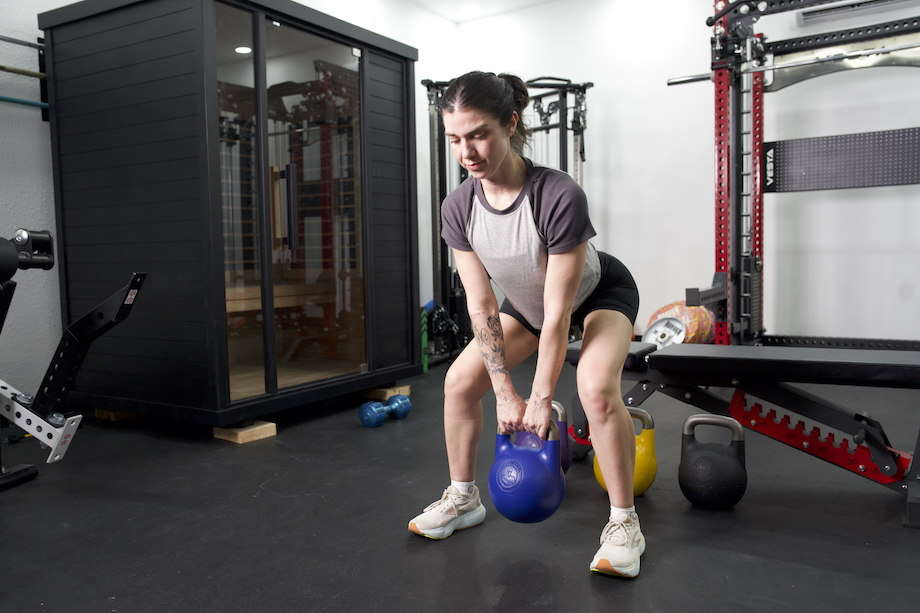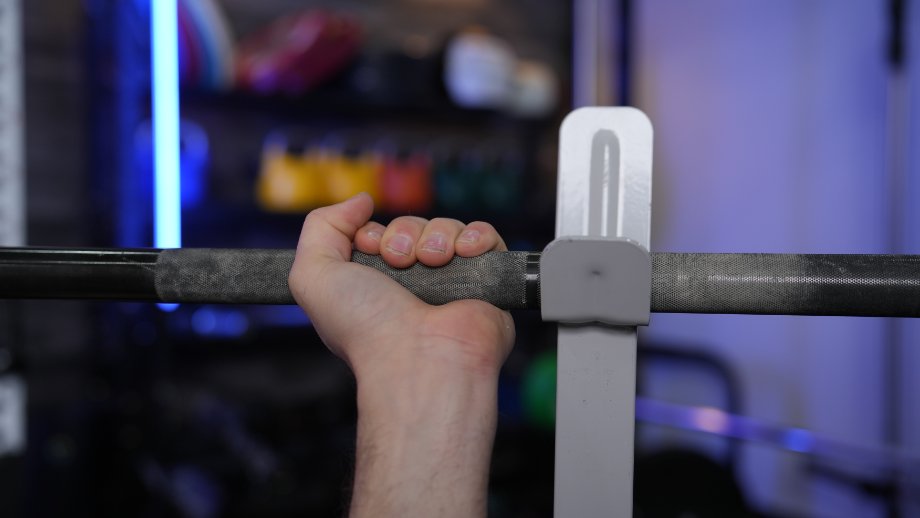The bent-over row is a classic barbell exercise used in virtually every strength training program. There isn’t a bodybuilder, powerlifter, or general athlete out there that would dare to disparage this weightlifting classic. That’s why it’s often the cornerstone of a comprehensive back workout.
But, blasting out barbell bent-over rows every week can get boring! It’s highly effective for building muscle and strength, but you can get similar results by occasionally doing something different.
Recent studies show1 that “systematic variation seems to enhance regional hypertrophic adaptations and maximize dynamic strength.” So, in addition to staving off training boredom, you may get better gains from adding a bent-over row variation into your programming.
Kate Meier, NASM-CPT, USAW-L1, CF-L1, and GGR senior director of fitness content, lists 10 of her favorite bent-over row variations, including step-by-step instructions for each and why they can make a good substitution when you need a break from your regular back exercises. Check it out below!
10 Bent-Over Row Variations
“A good bent-over row variation features a similar movement pattern and targets the same muscle groups, namely the lats, traps, rhomboids, and rear delts,” says Kate.
RELATED: Back Muscles Anatomy
The following exercises meet those criteria to help you get the best back workout without relying on the same old back exercises over and over again:
- Dumbbell bent-over row
- Gorilla row
- T-bar row
- Incline bench dumbbell row
- Underhand barbell row
- Wide-grip bent-over row
- Pendlay row
- Deficit Pendlay row
- Inverted row
- Pull-up
Dumbbell Bent-Over Row
Why do it: It’s never a dumb idea to swap your beloved barbell for a dumbbell. Using dumbbells lets you perform exercises unilaterally to correct muscle imbalances. Use a neutral grip to lessen wrist stress, and move through a longer range of motion to perform more overall work per rep.
How to do it:
- If doing the one-arm dumbbell row, grab a dumbbell in your right hand and set up next to a flat weight bench, placing your left hand and left knee on the bench for stability. To work both arms simultaneously, grab two of the best dumbbells and hold them with your feet shoulder-width apart and your palms facing each other.
- Hinge forward from your hips until you form a 45-degree angle with the floor. Pull your shoulders down and back to retract the scapulae.
- Leading with your elbow, pull the dumbbell(s) into your body, pinching your shoulder blades together at the top and squeezing your lats.
- Pause, then slowly bring the dumbbells back to the starting position.
- Repeat as needed. If doing single-arm rows, switch sides and repeat the set.
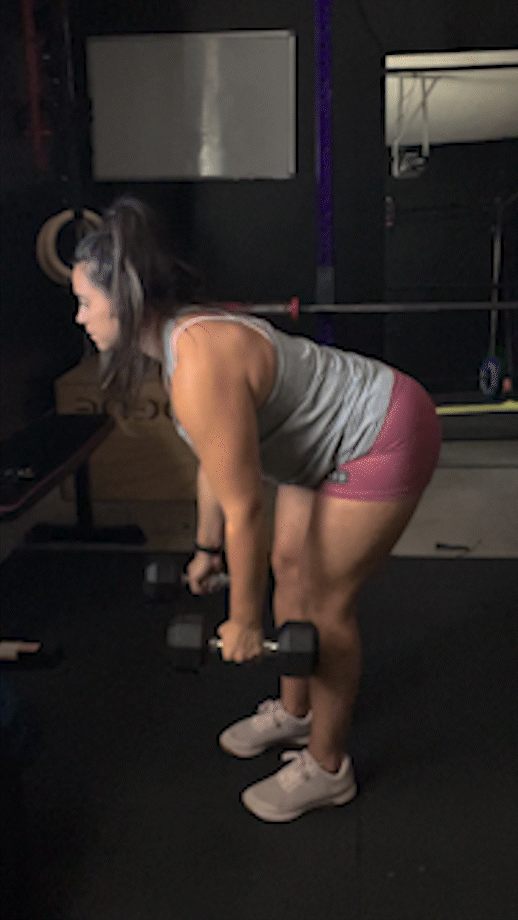
Gorilla Row
Why do it: “The gorilla row is sort of like a hybrid of the single-arm kettlebell row and the Pendlay row,” says Kate Meier, NASM-CPT, USAW-L1, CF-L1. “This trains your ability to generate power from a dead stop using your back muscles, but it also builds better core and trunk stability due to the positioning.”
How to do it:
- Grab two kettlebells and place them on the floor in front of you.
- Stand with your legs slightly wider than shoulder-width, then hinge forward and slightly bend your knees to reach down and grip the kettlebell handles. Your torso should be almost completely parallel with the floor.
- Pull one kettlebell into your body, keeping your back straight and core braced.
- Squeeze your back muscles, then slowly lower it back to the floor.
- Repeat the movement for your other arm.
- Alternate sides for each rep until the set is finished.
RELATED: Best Kettlebells
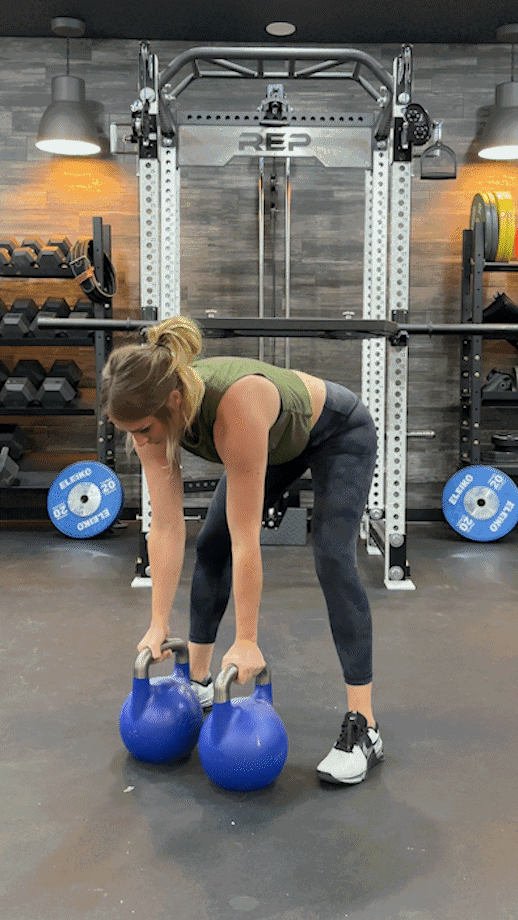
T-Bar Row
Why do it: The landmine setup used for T-bar rows keeps your bar on a fixed path. You’ll spend less energy stabilizing your core and trunk and keep the focus on your upper back where it should be. Most people can lift more weight for the T-bar row, too, allowing you to overload the muscles with a greater stack than you could muster with other movements.
How to do it:
- Secure a barbell to the landmine attachment, or set up your T-bar machine, and load it to the desired weight.
- Stand with the bar between your legs, facing away from the landmine anchor point.
- Lean forward and grip the bar with both hands near the end with the plates.
- Pull the bar toward your lower chest, keeping your chest tall and back straight.
- Pause, then lower it back to the starting position.
RELATED: Best Landmine Exercises
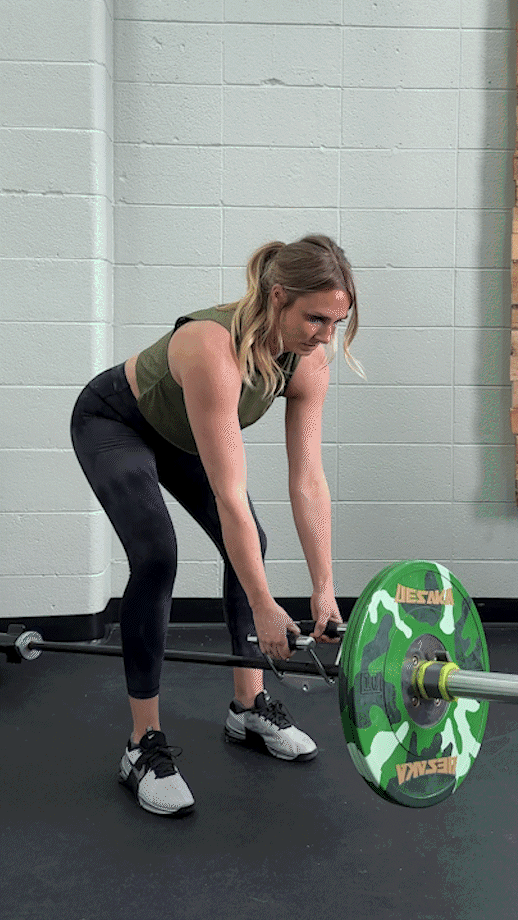
Incline Bench Dumbbell Row
Why do it: Also referred to as the chest-supported row, gluing your upper body to the back of an incline bench helps you reduce momentum and isolate the target muscles, like the trapezius, latissimus dorsi, and rhomboids, with more intensity.
How to do it:
- Adjust the weight bench to form a 45-degree angle, grab your dumbbells, and sit with your chest facing the backrest.
- Push your chest into the pad and fully extend your arms toward the floor.
- Leading with your elbows, pull the dumbbells into the body.
- Pinch your shoulder blades, squeeze the contraction, then slowly lower the weights back to the starting position.
- Repeat for reps.
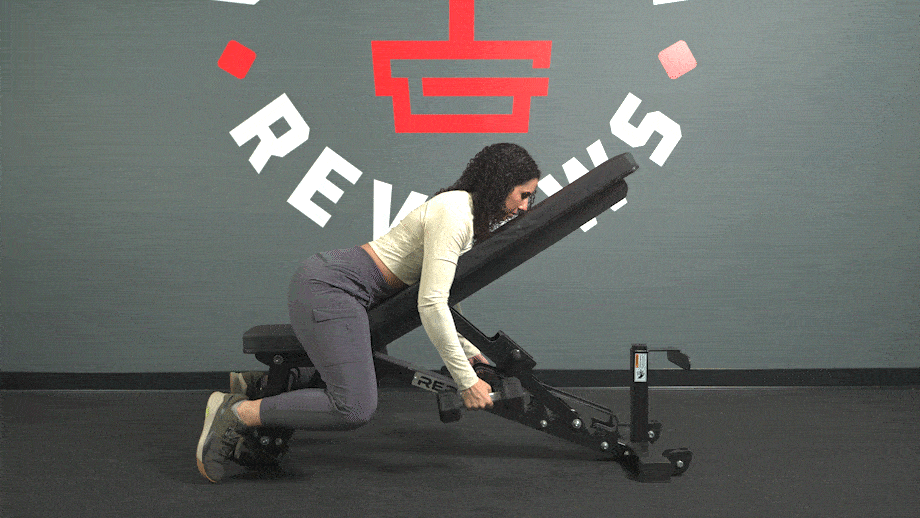
Underhand Barbell Row
Why do it: “Using an underhand grip rather than the classic overhand grip increases activation in the lower back, specifically the lower latissimus dorsi and erector spinae,” says Kate. “You’ll also feel it more in your biceps.”
How to do it:
- Set your barbell on the floor and load it to the desired weight.
- Stand over the bar with your feet shoulder-width apart, then hinge forward from your hips and bend at your knees to reach down and grip the bar with a double underhand grip.
- Deadlift the bar to your waist, keeping your elbows extended, then push your hips farther back and angle your torso forward to bring the bar to approximately knee height.
- Pinch your shoulder blades and pull the bar toward your sternum.
- Squeeze the contraction, then slowly lower the weight back down.
- Reset and repeat for reps.
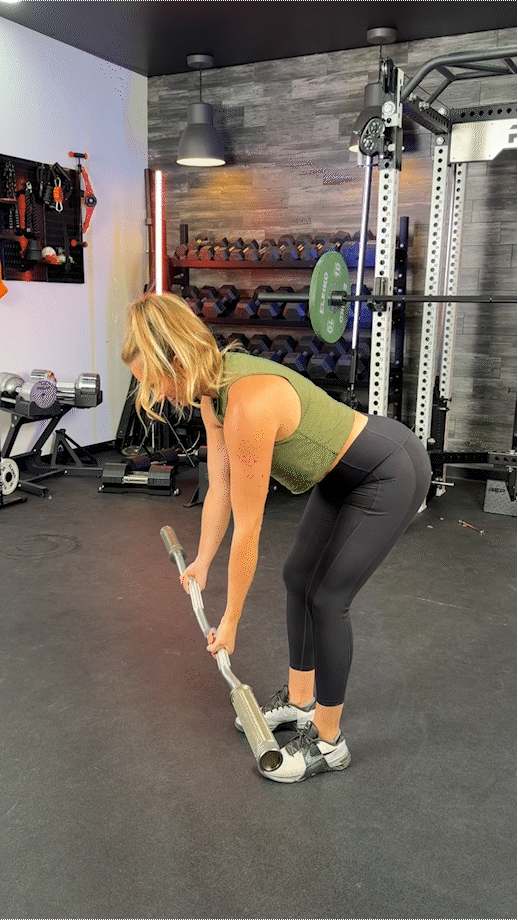
Wide-Grip Bent-Over Row
Why do it: The Journal of Strength and Conditioning2 found that using a wider grip during the upright row exercise increased muscle activation in the deltoids and trapezius while reducing activation in the biceps. The same holds true for the bent-over row.
How to do it:
- Load your barbell and place it at your feet.
- Hinge to reach down and grip the bar with an overhand grip. Your hands should be slightly outside of the barbell knurlings (slightly outside shoulder-width).
- Deadlift the bar and adjust to assume the standard barbell row starting position.
- Pull the bar into your sternum, keeping your shoulder blades pinched.
- Squeeze the contraction, then slowly lower the weight back down.
- Repeat for reps.
RELATED: What is Barbell Knurling?
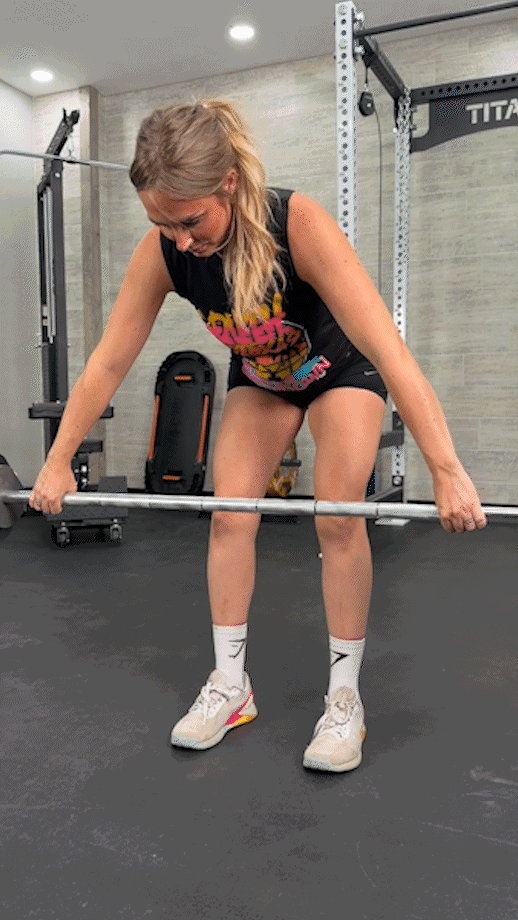
Pendlay Row
Why do it: The Pendlay row involves bringing the barbell to a complete stop in between each rep, meaning you’ll need strength and explosive power to execute it properly.
How to do it:
- Set up your barbell, push your hips back, and bend your knees so you can reach down and grip the bar slightly outside of shoulder-width.
- Pull the bar from the floor primarily using your back muscles.
- Squeeze at the top, then control the bar’s descent back to the floor.
- Reset and repeat as needed.
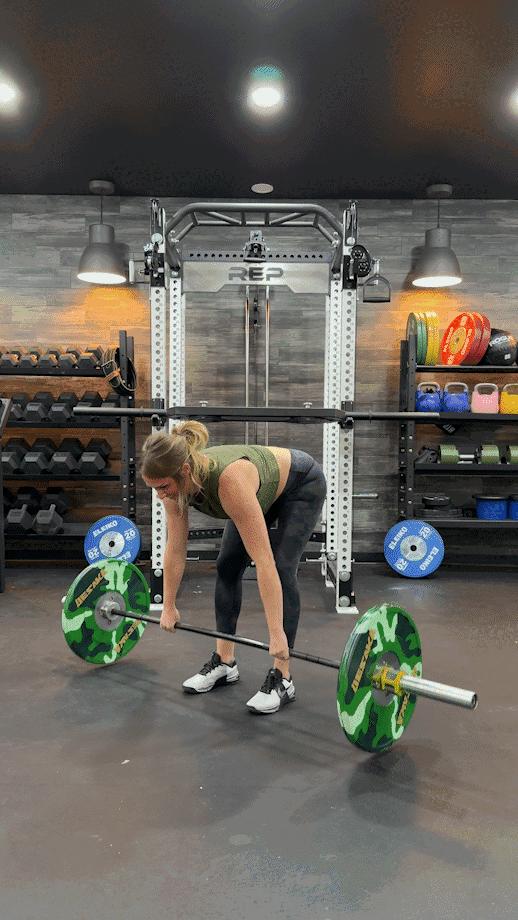
Deficit Pendlay Row
Why do it: “The deficit Pendlay row abides the same principles as the Pendlay row, but being farther from the floor increases the range of motion and your muscles’ time under tension,” says Kate, “so, it’s an overall more effective version of the lift.”
How to do it:
- Stand on the edge of a weightlifting platform or on a bumper plate with a loaded barbell on the floor below. Reach down and grip the bar as you would for the Pendlay row.
- Brace your core and engage your lats to pull the bar into your body.
- Squeeze the contraction, then slowly guide the bar back to a complete stop on the floor.
- Reset and repeat as needed.
RELATED: Best Bumper Plates Guide
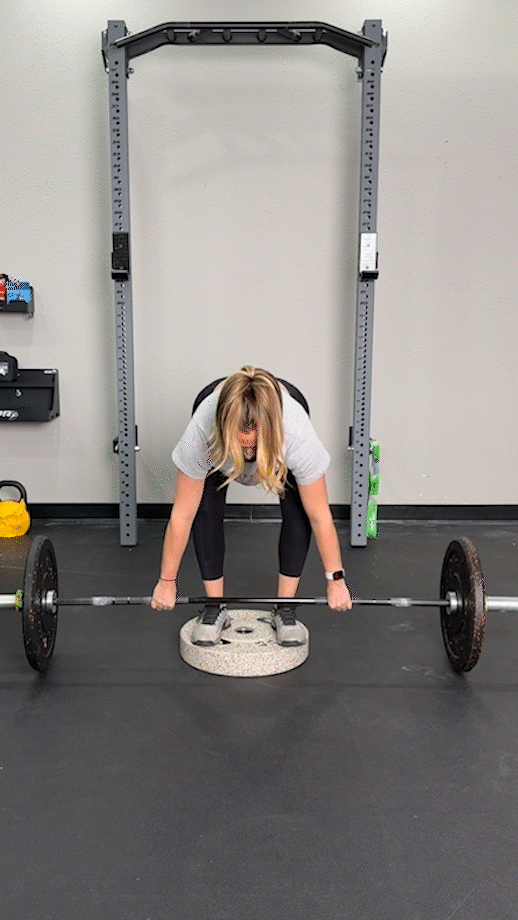
Inverted Row
Why do it: The Journal of Strength and Conditioning Research3 found that the inverted row exercise engaged the same muscles as the bent-over row, namely the trapezius, latissimus dorsi, and biceps brachii, at “levels conducive to strengthening.”
How to do it:
- Adjust the J-hooks of a squat stand or power rack to between waist and chest height.
- Rack an empty barbell and lie supine beneath it with the bar stacked over your chest.
- Reach up and grip the bar with your arms extended. Pull yourself up so you are hanging from the bar with only your heels keeping contact with the floor.
- Pull your body into the bar, squeezing your back muscles at the top.
- Pause, then slowly lower yourself back down until your arms are fully extended again.
- Repeat for reps.
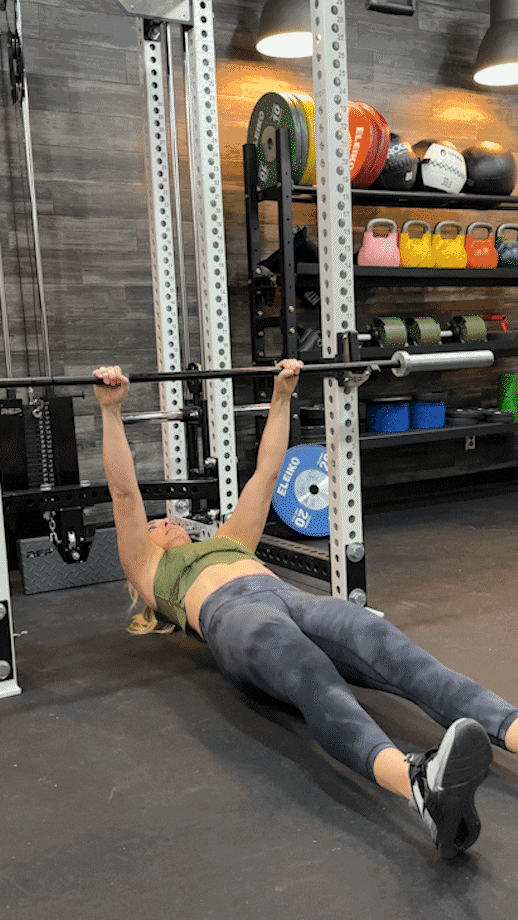
Pull-Up
Why do it: The pull-up is ostensibly the king of bodyweight exercises, working out your back, biceps, triceps, forearms, core, and more in one succinct movement. They’re essential for any and all strength-based workout routines.
How to do it:
- Grab a pull-up bar with an overhand grip and enter a dead hang.
- Engage your lats to pull your body up to the bar.
- Continue until your chin rises above the bar and your elbows are fully flexed.
- Hold the contraction, then slowly lower your body back to a dead hang.
Note: If regular pull-ups are too difficult, you can perform an assisted version by looping a resistance band around your pull-up bar and using the momentum to help you reach the top of the bar..
RELATED: What Muscles Do Pull-Ups Work?
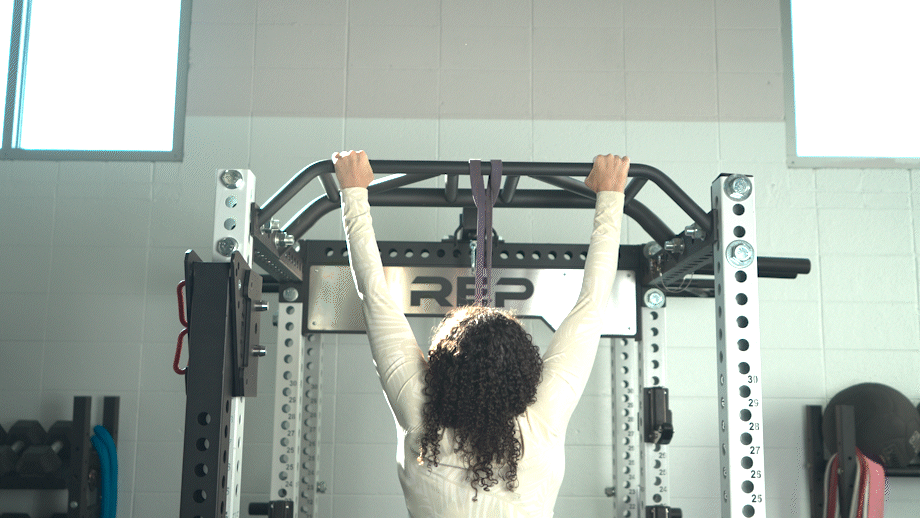
Bent-Over Row Variations: Final Thoughts
Bent-over row variations can help break up the monotony of your regular back workout to shake things up while keeping those same muscles firing. Or, if you need a break from bent-over rows entirely, we also have a list of bent-over row alternatives to throw into the mix.
Remember, the best workout is the workout you finish, so if training boredom is preventing you from reaching the end zone, making a substitution can be a good call.
Bent-Over Row Variations: FAQs
What is the best type of bent-over row?
When performed correctly, the regular bent-over barbell row is an incredible exercise for building back muscle and strength, and each variation was designed with that same goal in mind. No one exercise is drastically “better” or more effective than another, making each a viable inclusion in your back-day split.
At the end of the day, it comes down to personal preference, comfort, and proficiency.
Your best exercise may not be your gym buddy’s best, and vice versa, and that’s okay! You’ll most likely get the best results from keeping things varied.
What is the best row variation?
The best row variations target the same muscle groups as the regular row exercise, usually involving a slightly different technique, different equipment, or some other way in which the muscle stimulus is distinctly different.
Using a variety of row variations may help you break plateaus and experience greater gains in strength and hypertrophy.
What exercise can you do instead of bent-over rows?
There are loads of bent-over row alternatives available, including the:
– TRX inverted row
– Ring rows
– Banded row
– T-bar row
– Seated cable row
– Renegade row
– Yates row
Whether you’re unable to do barbell or dumbbell rows or just plain don’t like ‘em, you’ll find many other exercises work to provide a similar stimulus and inspire the same types of gains.
How do you modify bent over rows?
“Practicing your bent-over row technique with a length of PVC pipe or an unloaded barbell is a great way to get acquainted, but going light is the preferred method of modifying the barbell row so long as you’re able to do the movement without back pain,” says Kate Meier, NASM-CPT, USAW-L1, CF-L1, and GGR senior director of fitness content.
If you do experience pain, consult your doctor or another qualified healthcare professional for what’s best for you. Working with a certified personal trainer is good, too, for avoiding movements that may cause an injury, contribute to an injury, or exacerbate an existing injury.
References
1. Kassiano W, Nunes JP, Costa B, Ribeiro AS, Schoenfeld BJ, Cyrino ES. Does Varying Resistance Exercises Promote Superior Muscle Hypertrophy and Strength Gains? A Systematic Review. J Strength Cond Res. 2022;36(6):1753-1762. doi:10.1519/JSC.0000000000004258
2. McAllister MJ, Schilling BK, Hammond KG, Weiss LW, Farney TM. Effect of grip width on electromyographic activity during the upright row. J Strength Cond Res. 2013;27(1):181-187. doi:10.1519/JSC.0b013e31824f23ad
3. Youdas JW, Keith JM, Nonn DE, Squires AC, Hollman JH. Activation of Spinal Stabilizers and Shoulder Complex Muscles During an Inverted Row Using a Portable Pull-up Device and Body Weight Resistance. J Strength Cond Res. 2016;30(7):1933-1941. doi:10.1519/JSC.0000000000001210


